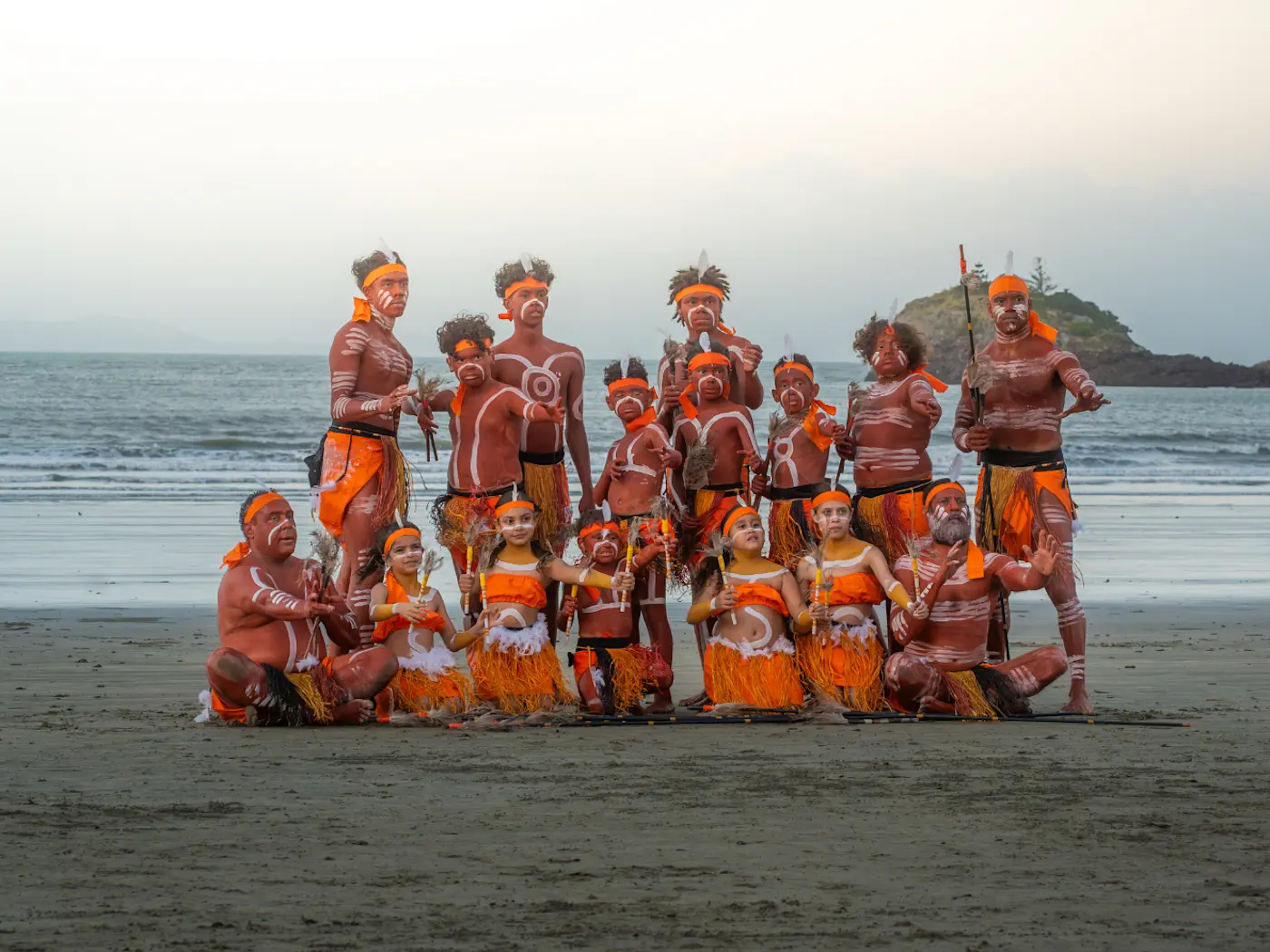
Cape Hillsborough aboriginal culture
One of the best ways to learn more is along one of our walking trails. On the Diversity Boardwalk, you’ll come across a midden – formed by shells discarded from shellfish, which were collected from nearby mangroves then roasted over open fires.
Follow the Aboriginal Plant Walk to learn about how the Yuibera people used the wealth of plants growing in and around Cape Hillsborough. Some of the plants you’ll see include:
Broad-leaved tea tree (paper bark): Wood was used in burials and huts. Young leaves were bruised in water, which was then drunk to treat general sicknesses, colds and headaches.
Hickory wattle: Wood was used in digging sticks, axe handles, music sticks and spear prongs. Seeds were ground into flour. Gum was chewed.
Blackboy (grass tree): Long flower shafts were used in spear shafts and sires. Flowers were infused in water to make sweet drinks. Seeds were ground into flour. Inner crowns were eaten.
Ghost gum (cabbage gum). Wood was used to make fire, even in wet conditions, and build tools. Gum was turned into an antiseptic to repel leeches and treat sores. Bark extract was drunk to treat colds and dysentery.
Native cherry: Wood was used in tools and burnt as a mosquito repellent. Leaves were crushed to treat open sores. Fruit was eaten. A preparation made of fruit and bark was used as contraception.
Cheese fruit: Leaves were used to wrap and cook food, and to treat wounds. Juices were used to heal sores. Yellow dye was extracted from the roots, then used in weaving, and making baskets and string. Young leaves were eaten. Fruit was eaten to treat colds, flu and diarrhoea.
Supple jack: Stems were used to sew bark canoes and as fibre, and chewed to relieve toothache. Sap was a treatment for sore eyes. Infusion of crushed leaves was used to treat flu, toothache, sore throats and chest complaints.
Cocky apple: Preparation made from inner bark and leaves was used to treat boils, burns, wounds, headaches and general sickness. Bark was used to make fish poison. Fruit was eaten raw or roasted.
Pandanus: Leaves were used in weaving and hut thatching. Fruit and bases of leaves were eaten.
Foam bark: Bark was crushed and used as fish poison.
